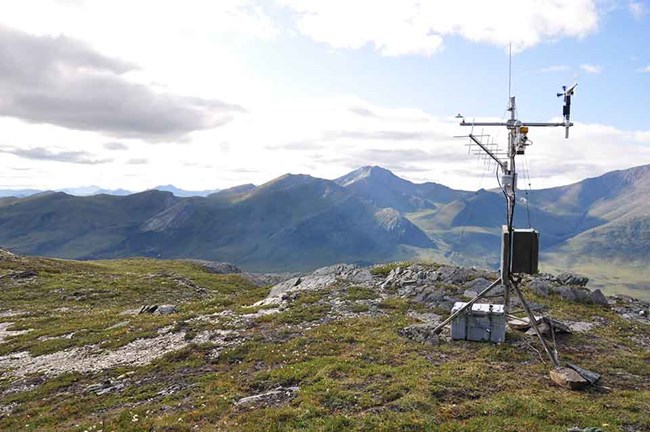Last updated: December 30, 2019
Article
Summer Temperature Patterns

Modelling high‐latitude summer temperature patterns using physiographic variables
Abstract
Recent investigations of high‐resolution temperature patterns employing dense observational networks have improved our understanding of fine‐scale climatic influences on hydrological and ecological processes. Few of these investigations, however, have focused on high‐latitude environments. In this study—one of the first to evaluate drivers of fine‐scale temperature patterns in a non‐glaciated high‐latitude environment—we evaluated physiographic controls on summer temperature while accounting for free‐air temperature conditions along a north–south transect of temperature sensors on Mt. Healy, at the eastern edge of Denali National Park and Preserve in Alaska, United States. Although the study was limited to summer, when near‐surface temperature inversions are rare, we identified average daily minimum temperature (Tmin) lapse rates shallower than −2 °C/km over five summers. Lapse rates of average temperature (Tavg) were steeper (−5.3 °C/km), but still did not approach the global average lapse rate of −6.5 °C/km. We also identified positive effects of solar radiation on both Tmin and Tavg, variation in Tmin and Tavg lapse rates across a range of synoptic temperature conditions, and variation in Tmin lapse rates across terrain convergence values. Finally, we compared relationships between elevation and temperature from transect sensors and a gridded product. Over 15 months of comparison, sensor Tavg was 0.6 °C cooler than gridded data at similar elevations. Sensor lapse rates were on average 0.5 °C steeper than those from gridded data but only significantly so in the cool month of June 2014. These differences highlight the need for additional instrumentation across this remote and topographically variable region to improve accuracy and reduce biases in gridded climate products.
Sadoti, G., S. A. McAfee, C. A. Roland, E. F. Nicklen, and P. J. Sousanes. 2018. Modelling high-latitude summer temperature patterns using physiographic variables. Journal of Climatology
